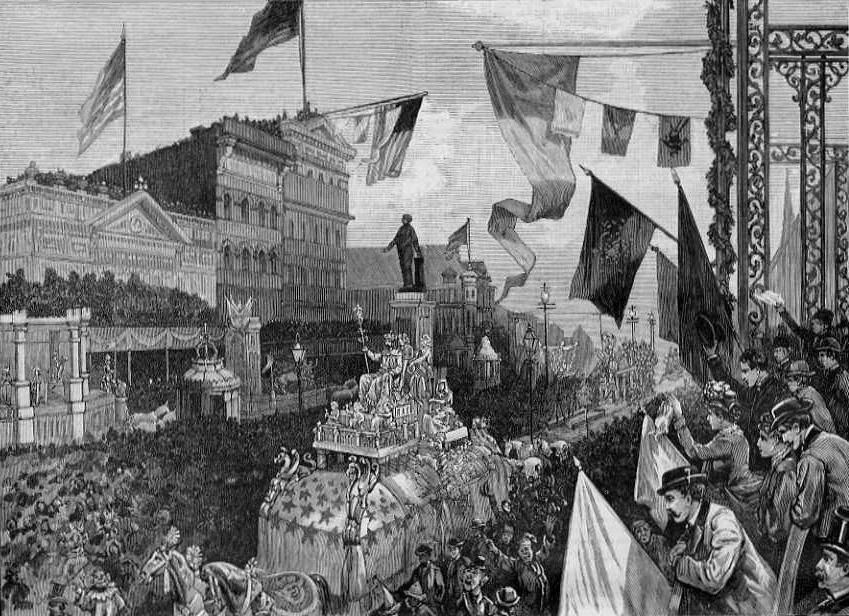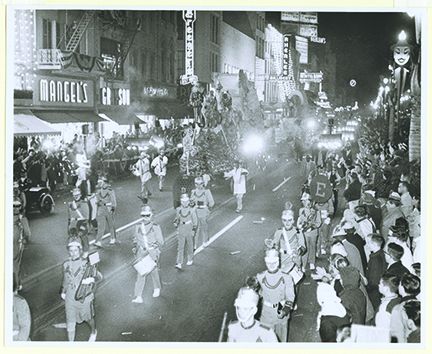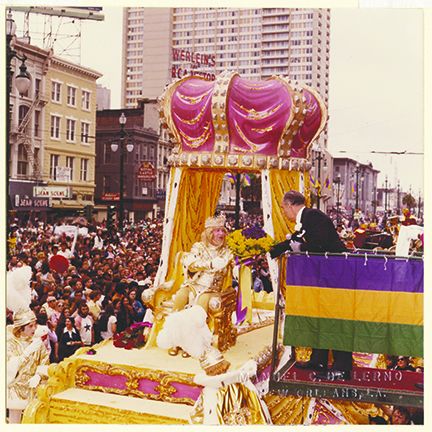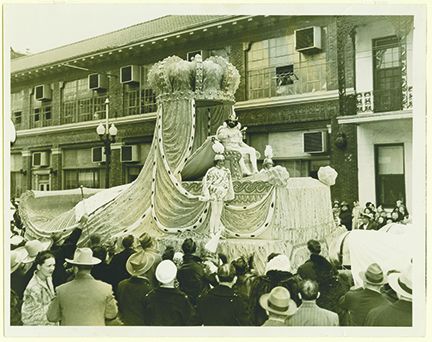On Mardi Gras, most New Orleanians are celebrating in revelry while the rest of the country just functions on a regular Tuesday. As we discuss the founding of Rex, we must look at how Mardi Gras landed in New Orleans.
We are fortunate that early French explorers visiting the banks of the Mississippi during the late 1700s called it Point Du Mardi Gras. They inherently brought the French-based holiday with them to continue their traditions and customs. The future citizens kept that tradition alive and left us with the greatest free show on Earth. In the 19th century, Mardi Gras began to slip out of control as revelers began to participate in a dark side of street celebrations.

The Mistick Krewe of Comus single-handedly saved the day by showing us how to party in organized fashion. They taught us how to stage street pageantry called parades. The organizations behind these parades were called krewes. They spelled crew with the letter K as a pun to separate it from the notions of work crews or ship crews.
In 1872, it's documented that the Grand Duke Alexis of Russia was on a tour of the United States and was in New Orleans on Mardi Gras, where he was greeted with the first parade led by Rex (Latin for "king"), the King of Carnival. Rex founders organized that parade to help the city with a public daytime celebration to complement what the more private Comus organization was presenting at night.
They also hoped a new parade would help the city by attracting more visitors. The Grand Duke enjoyed what he saw and so did the participants. It became such a hit they continued to parade on Mardi Gras and took on the role of the King of Mardi Gras. The organization incorporated under the name "The School of Design."

For a century and a half, the Rex organization has become the frontline leader of all Mardi Gras parades. They're instrumental in philanthropy behind the scenes as they give diligently to the city's Civic Fund annually. They also sponsor many other educational programs. Post-Katrina Rex formed the Pro Bono Publico Foundation—named for the Rex motto—and has given more than $10 million to support public schools in New Orleans. "Rex in the Classroom" is another popular program, and hundreds of school children visit the Rex den each year. Rex also partners with the Zulu Social Aid and Pleasure Club to support schools.
They have evolved from small, papier-mâché decorated wagons to the beautiful, large, canvas-stretched floats we see today. A small family-owned artist group started by George Soulié produced their first floats. They were constructed in warehouses they called dens. Blaine Kern took on that role in the early 1950s. Floats began to see changes in appearances for the better. Paints became brighter, props were made of fiberglass as opposed to papier-mâché, and floats began to be pulled by tractors instead of mules.The Rex organization kept all the traditions of Mardi Gras well intact through the years. Its royalty is always kept secret until they are announced the weekend before the parade. Its captain and riders are masked. In the 1960s, the Rex krewe introduced the first novelty throw known as the doubloon. It became so popular that all the other krewes wanted to throw them.

In the 1970s, when Popeyes Chicken chain grew exponentially, krewes started throwing doubloons that acted as a coupon for free chicken dinners at the franchise. This phenomenon presented problems as it caused many outbreaks of fights among spectators. City officials also saw some issues with the law as it pertains to advertising on throw items. Laws were passed prohibiting commercialization of any kind in Mardi Gras parades.
The sizes of the floats also grew with the expansion of membership. However, Rex doesn't use super floats like newer organizations, super-krewes like Endymion and Bacchus. In its early decades, Rex floats would carry six to 10 men on average. Presently, their floats can carry up to 40 riders.
During its longevity, Rex did see some dark carnivals. Canceled Mardi Gras celebrations due to WWII, the Korean War, and the Police Strike of 1979 kept the parade from rolling. It also suffered through a trying moment in the late 1990s as a city councilwoman challenged them and other historic oldline krewes with new laws that prevented racial and gender-based discrimination. Unlike some of its parading cousins, they survived it and complied with city changes.
Today, Rex has opened its ranks to members of African American descent. This was unheard of in its formative years. In the late 1960s, they invited the first all African American high school marching band to participate in its parade. The school was St. Augustine High. In 2017, to celebrate the 50th anniversary of that first march with Rex, alumni members of that band were invited back to ride in its anniversary parade.
Rex still holds the tradition of staging its ball on the evening of Carnival to close out the season by meeting Comus in beautiful pageantry called "The Meeting of the Courts." Prior to Hurricane Katrina, this affair was held at the Municipal Auditorium in Armstrong Park. The Rex Ball is more a grand reception than a ball. Guests dress in formal white-tie attire and ball gowns, members are not masked, and there are no call-outs as there are in some other traditional balls.

Rex remains to be one of the most sought after and beautiful parades in all of Mardi Gras. Today we can enjoy the return of small extras like the annual parade bulletin in vivid color included in the local newspaper for fans to enjoy. Its floats are stunningly adorned with gorgeous paper flowers and dangling decorations along with absolute beautiful artwork by its artists, such as New Orleans-born professional scenic artist Mr. Raymond Bowie, who painted many Rex parades for Kern Studios. Since 2019, the krewe has commissioned Royal Artists Inc. to produce its parade.
It is believed that the Rex organization holds just about one thousand members and continues to be active in philanthropy throughout the city. Its leaders have active roles on New Orleans' Mardi Gras Planning Committee, currently co-chaired by the Rex Captain and the President of the Zulu Social Aid and Pleasure Club. The Rex den remains on Claiborne Avenue where they store and work on those beautiful floats. The grandfather of Mardi Gras and its colors have coined the idea of street pageantry New Orleans style since its inception a century and a half ago and has proven to be darn good at it. Hail Rex!

